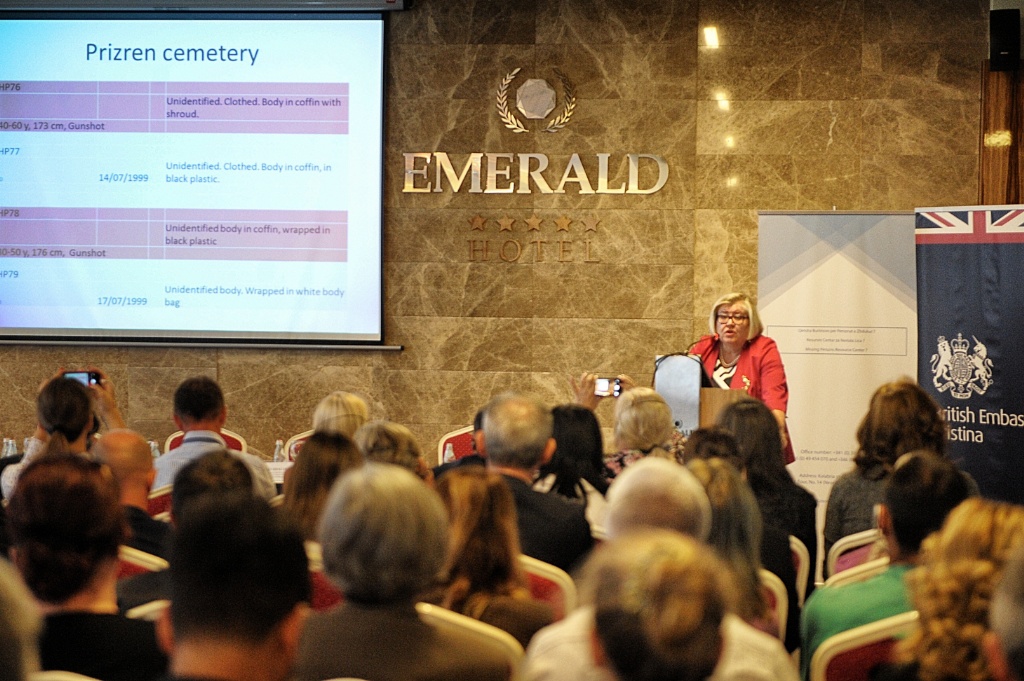Conference on Missing Persons – The Search Continues

Today, 23 August, the Conference on the Issue of Missing Persons was held in Pristina organized by the Missing Persons Resource Center and supported by the British Embassy in Pristina.
Tarja Formisto, Deputy Director of the Institute of Forensic Medicine from EULEX, provided a presentation outlining both the challenges and the results that have been achieved since 2000 concerning the successful identification of missing persons.
The conference was opened by the President of Kosovo Hashim Thaçi, and was attended by the Chair of the Government Commission on Missing Persons as well as the Chairs of the Working Groups of Pristina and Belgrade. Also presenting was the Head of the Medical Law Institute, the International Committee for the Red Cross and the International Commission on Missing Persons, as well as officials from the British Embassy.
Formisto illustrated a number of issues faced by officials in their efforts towards further identification. In particular, she appealed to the families of missing persons to come forward with DNA samples and any information relevant that would help locate and confirm the identification of additional individuals.
She also focused on the renewed efforts of EULEX to re-open previously concluded cases which resulted in the successful identification of more missing persons. Since 2011, over 1.180 concluded cases have been reviewed. ‘It is my responsibility to solve as many cases as I can,’ she said. ‘If in this process it means we have to go back, we will go back.’
Since 2016, EULEX has implemented new geomapping techniques with the aid of the EULEX Forensic Archaeologist. This technology facilitates the process of searching for previously untouched sites for excavation. ‘This has been a lot of work, but the results speak for themselves,’ she noted.
Since the mission deployed in December 2008, when EULEX began working with the Institute of Forensic Medicine, the remains of 495 victims have been returned to their families. These include 390 missing persons who were found following 570 intensive field operations and laboratory analysis, autopsy and identification work and nearly 2.200 DNA bone samples analyzed.